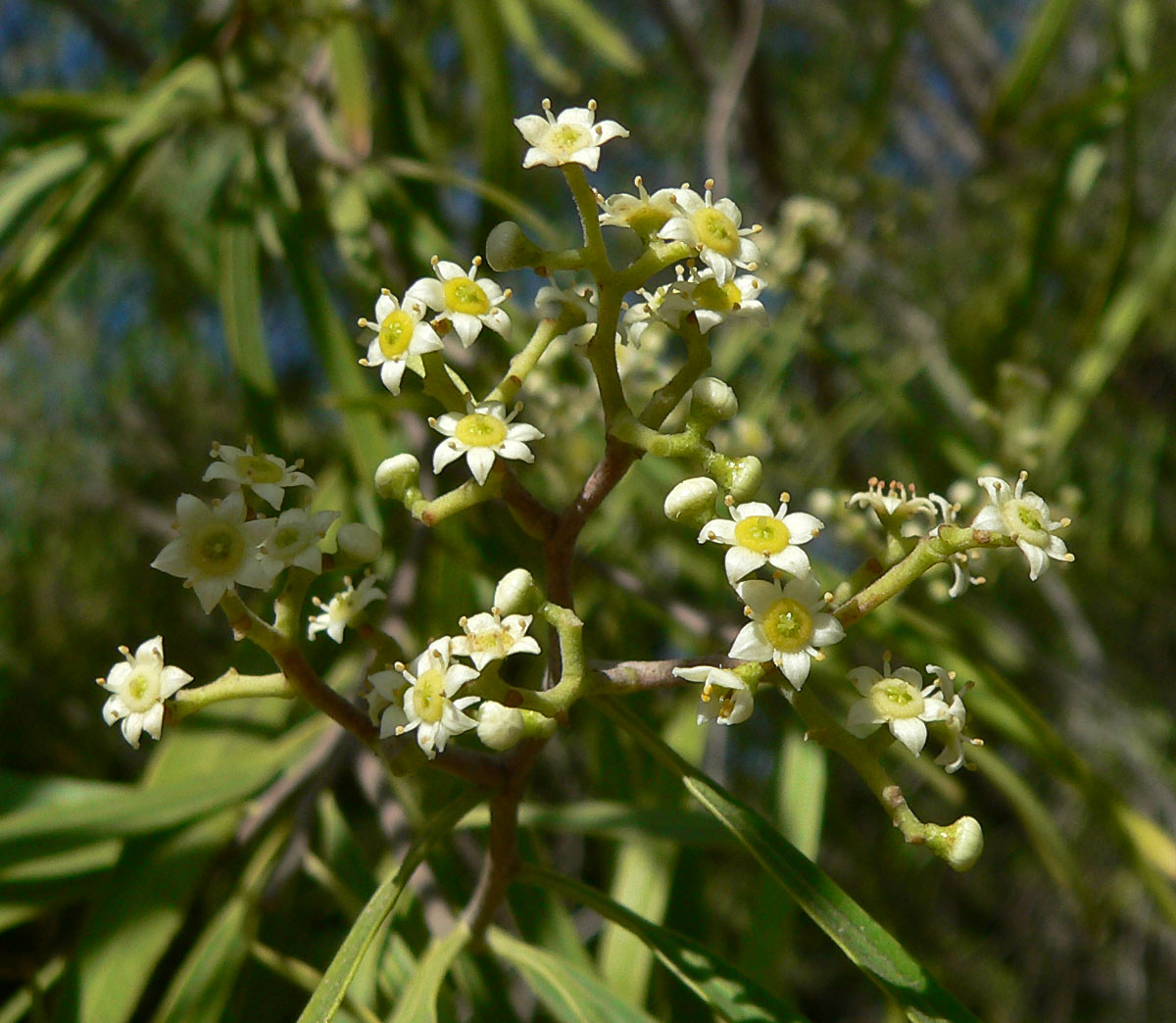Geijera parviflora
(Geijera parviflora)

Description
Geijera parviflora, commonly known as the Wilga or Native Willow, is a small tree or bush found in inland parts of eastern Australia. It features thin drooping leaves, up to 18 cm (7 in) long. It was first described by English botanist John Lindley in 1848, Other vernacular names include sheepbush and dogwood. The specific epithet parviflora is from the Latin, meaning "small flowers". Wilga may grow to 10 metres (33 feet) tall, and has drooping branches. The leaves are linear to spear-shaped (lanceolate) and range from 3.5 to 18 cm (1.4 to 7.1 in) long and 0.4–1 cm (0.16–0.39 in) wide. They give off a strong smell when crushed. The small white-petalled flowers of this member of the citrus family occur between June and November. Their smell has been described as foetid, and they attract blowflies. The flowers have also been described as strong smelling or citrus scented and attract insects. The fruit are globose in shape, around 5 mm long, inside are shiny black seeds. Regeneration from fresh seed and cuttings has proven to be difficult. It is suggested that the hard seed coat should be cracked, to assist seed germination.
Taxonomic tree:







